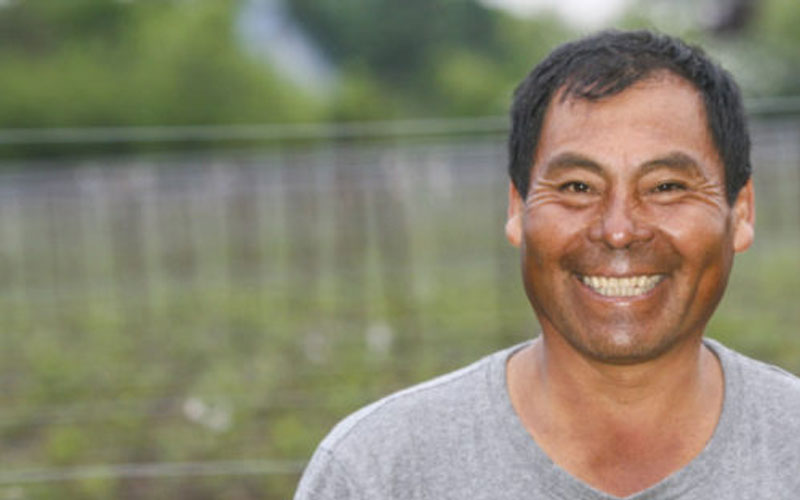County News
From high country


Emiliano Reyes Lopez at Stanners Vineyard in Hillier.
Sierra Madres to Hillier
He isn’t religious. He doesn’t go to church. But life in Emiliano Reyes Lopez’s mountain village, San José Xochixtlán, is still in many ways shaped by Roman Catholic traditions. On the sixth Friday of Lent, the entire village of 650 gathers in the courtyard in front of the church to dance, sing and socialize on this day of Sorrows. In the middle, women adorned in brightly coloured woollen tunics, known as huipuls, dance rhythmically in a semicircle as others watch on, or sway to the earnest sounds from the brass band performing on the periphery.
The village of San José Xochixtlán is tucked away on a mountain plateau, 2,300 feet above sea level, in the Sierra Madres in southwest Mexico’s Oaxaca state. Emiliano was born there 50 years ago. He expects to die there. He says the allure of the mountains roughly defining the horizon surrounding his village has not lost its ability to inspire awe and joy.
“It is very pretty,” says Emiliano. “It’s a beautiful view.”
But like much of rural Mexico, the economy is mostly controlled by large agricultural companies headquartered far away. There is work for a few months each winter picking coffee beans but not enough to sustain his family.
Emiliano is married to Macaria and together, they have six children—four girls and two boys (Ana, Patricia, Filogoni, Lourdes, Alfredo and Felix). The three oldest girls have found work in South Carolina. He isn’t sure when, or if, he will see them again. His youngest is 16. Felix is still in school.
Emiliano has been coming north to Canaa for nine seasons.
He is frank about why he spends six months away from home each year.
“I need the money,” said Emiliano. “There is work elsewhere in Mexico but I can earn much more working in Canada.”
Wouldn’t he prefer to work in South Carolina, closer to his children? Emiliano doesn’t believe he could get a visa to work in the U.S. Besides, “Canada has friendlier police.”
He works every day, as weather permits. His workday begins shortly after dawn in the vineyard, coaxing the emerging canes to attach to the strands of wire running along each row. He works alongside Gregario, another Oaxacan traveller and a Canadian woman, Chantal.
“She is a very good worker,” says Emiliano, whose leathery skin and muscular build on a small frame testify to a life spent mostly working long hours outdoors.
Together, the three of them tend about 20 acres of vines.
“Eat, sleep and work,” says Emiliano, describing his life in Hillier with a smile. “I’m happy to be here for the work and to be surrounded by nice people.”
Back home, he knows everyone in his village. Many are relatives. Most trace their ancestry to the indigenous Mixteca peoples—a civilization that rivalled the Zapotec and Aztec thousands of years before the arrival and eventual conquest by the Spaniards. Most of the 800,000 Mixteca people remaining live in the western half of Oaxaca. Emiliano speaks both Spanish and Mixtec. He is proud of his native heritage.
But despite his own deeply felt connection to San José Xochixtlán, he wants his children to get a good education and find professional careers elsewhere.
“Doctor, architect, government official. Maybe a journalist,” he says, smiling at the interviewer.

Comments (0)